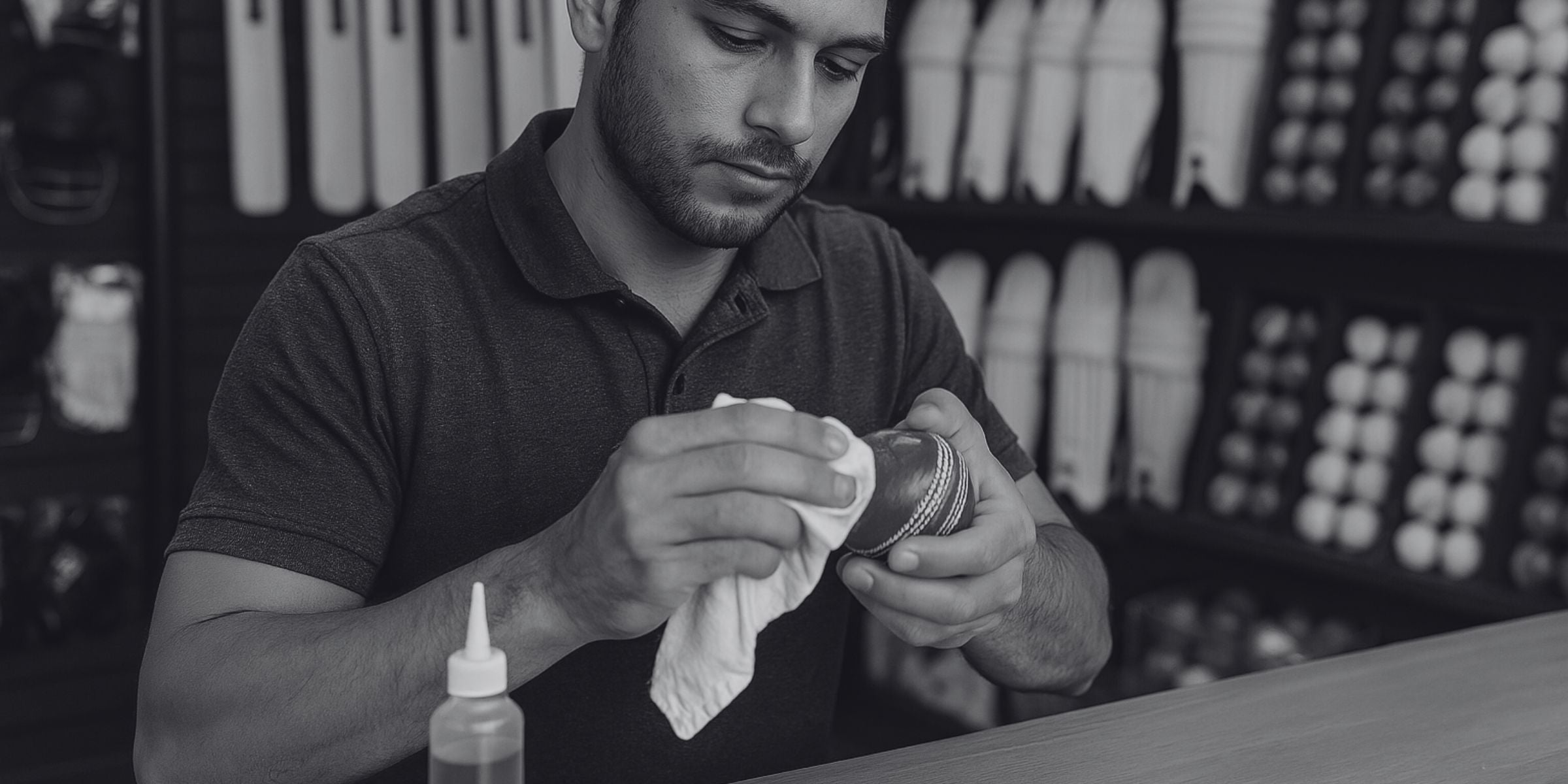Article: Cricket Ball Care Guide

Cricket Ball Care Guide
The Complete Cricket Ball Care Guide: How to Maintain 1-Piece, 2-Piece, 3-Piece, and 4-Piece Balls
Introduction:
A cricket ball is the heart of the game, and its condition can significantly impact performance. Whether you’re using a 1-piece, 2-piece, 3-piece, or 4-piece ball, proper care is essential to maintain its quality, durability, and performance. In this guide, we’ll cover everything you need to know about cricket ball care, including the importance of stitches, how to check quality, and maintenance tips.
Types of Cricket Balls
Cricket balls are categorized based on their construction:
-
1-Piece Ball:
-
Made from a single piece of leather.
-
Rarely used in professional cricket but common in practice sessions.
-
Less durable and prone to losing shape quickly.
-
-
2-Piece Ball:
-
Made from two halves of leather stitched together.
-
Commonly used in limited-overs cricket (e.g., white balls for ODIs and T20s).
-
Offers a good balance of durability and performance.
-
-
3-Piece Ball:
-
Made from three parts: a core wrapped in twine and covered by two leather halves.
-
Used in high-quality matches and known for its consistent performance.
-
More durable than 2-piece balls.
-
-
4-Piece Ball:
-
Made from four pieces of leather stitched together.
-
Offers superior durability and is often used in professional matches.
-
Provides a consistent seam and swing.
-
Why Are Stitches Important?
The stitches on a cricket ball play a crucial role in its performance:
-
Seam: The raised stitching creates the seam, which helps bowlers grip the ball and generate swing or spin.
-
Durability: High-quality stitching ensures the ball stays intact during intense play.
-
Aerodynamics: The seam affects how the ball moves through the air, influencing swing and drift.
How to Check the Quality of a Cricket Ball
-
Leather Quality:
-
Look for smooth, evenly colored leather without cracks or blemishes.
-
High-quality balls use premium leather that feels firm yet supple.
-
-
Stitching:
-
Check for even, tight stitches without loose threads.
-
The seam should be prominent and symmetrical.
-
-
Shape and Balance:
-
Roll the ball on a flat surface to ensure it moves straight without wobbling.
-
A well-balanced ball will feel even in weight distribution.
-
-
Core:
-
Press the ball gently to check for a solid, firm core.
-
Avoid balls that feel too soft or hollow.
-
Cricket Ball Care Tips
-
Cleaning:
-
Wipe the ball with a damp cloth after each use to remove dirt and sweat.
-
Avoid using harsh chemicals or soaking the ball in water.
-
-
Polishing:
-
Use a specialized cricket ball polish or saliva to maintain the shine and grip.
-
Regularly polish one side of the ball to help bowlers achieve swing.
-
-
Storing:
-
Store the ball in a cool, dry place away from direct sunlight or moisture.
-
Use a ball cover or pouch to protect it from dust and scratches.
-
-
Avoid Excessive Moisture:
-
Keep the ball dry during wet conditions to prevent damage to the leather and stitches.
-
If the ball gets wet, dry it gently with a soft cloth.
-
-
Rotate Usage:
-
If you have multiple balls, rotate their usage to ensure even wear and tear.
-
This is especially important for practice sessions.
-
Common Mistakes to Avoid
-
Using the Ball on Rough Surfaces: Avoid playing with the ball on concrete or abrasive surfaces, as this can damage the leather and stitches.
-
Over-Polishing: Excessive polishing can make the ball too smooth, reducing its grip and swing potential.
-
Ignoring Minor Damage: Small cracks or loose stitches can worsen over time. Address these issues immediately.
Conclusion
Proper care of your cricket ball ensures it performs consistently and lasts longer, whether it’s a 1-piece practice ball or a 4-piece professional match ball. By understanding the construction, checking the quality, and following these maintenance tips, you can keep your cricket ball in top condition for every game.
_____________________________________________________________
All Zee Sports Cricket Balls Pages Links.
https://zeesports.co/collections/7-star-cricket-balls
https://zeesports.co/collections/sports-balls
https://zeesports.co/collections/tape-tennis-balls
https://zeesports.co/collections/rugby-ball
https://zeesports.co/collections/volley-balls
https://zeesports.co/collections/soccer-balls
https://zeesports.co/collections/balls
https://zeesports.co/collections/cricket-balls
https://zeesports.co/collections/5-star-cricket-balls


Leave a comment
This site is protected by hCaptcha and the hCaptcha Privacy Policy and Terms of Service apply.